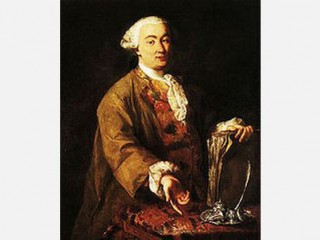
Carlo Goldoni biography
Date of birth : 1707-02-25
Date of death : 1793-02-06
Birthplace : Venice, Italy
Nationality : Italian
Category : Famous Figures
Last modified : 2011-01-28
Credited as : Dramatist and poet, librettist, Enea nel Lazio
The plays of the Italian dramatist, poet, and librettist Carlo Goldoni brought new realism and more credible characterization to the Italian stage. He wrote more than 250 works in Italian, Venetian dialect, and French.
Born to a prosperous middle-class family, Carlo Goldoni displayed a theatrical inclination from early childhood. As a university student, he often put aside his law books to attend performances. In 1734, after 3 years in the diplomatic service, Goldoni became poet of the Imer company in Venice and successively was appointed director of the S. Samuele and S. Giovanni Crisostomo theaters. Goldoni's marriage in 1736 to Nicoletta Connio, daughter of a prominent Genoese family, dates from this formative period.
Although he interrupted theatrical activities in 1744 to practice law, Goldoni returned to Venice in 1748 as poet of the S. Angelo theater, then under the leadership of Girolamo Medebac. Overworked and underpaid—his contract for 1750 demanded 16 new plays—Goldoni accepted a competing offer from the Vendramin brothers, impresarios of the S. Luca theater.
The years 1748-1762 represent the most successful of Goldoni's career because now he was able to incorporate his views on dramatic reform into the fabric of his works. Until Goldoni, the prevailing commedia dell'arte style depended upon actors who improvised their roles from a list of stock characters. Therefore drama revolved about the actors and the success with which their talents impressed the audience. Goldoni's works signaled a new direction in which primacy was soon restored to the playwright, whose scripts—not an actor's improvisations—determined the play.
By observing society and providing plausible motivation for his characters, Goldoni's more credible and more realistic works soon gained an immense following. Among his most successful are The Crafty Widow (1748); The Anti-quarian's Family (1749), in which Goldoni points to the conflict between the rising bourgeoisie and the decaying nobility; The Comic Theatre (1750), which he calls "less a Comedy than a Foreword to all my Comedies"; and La Locandiera (1753; Mine Hostess), in which the protagonist Mirandolina astutely manages to keep the affections and services of the headwaiter at her inn, while igniting the interest of two noble guests, one a professed woman hater, the other an old miser. From these and other works emerges the ethical content of Goldoni's character plays. A believer in modernity and progress, he championed the rights of women and the equality of all classes. In espousing these
views, Goldoni frequently satirized the aristocracy and their courts.
Goldoni's successes did not spare him from criticism. During the period 1748-1753, while Goldoni was creating more realistic and thoughtful plays for the S. Angelo theater, he was often attacked by Pietro Chiari, then a writer of sentimental, romantic dramas at the S. Samuele theater. An example of their rivalry was Chiari's parody, The School for Widows, which appeared shortly after Goldoni's The Crafty Widow. After moving to the S. Luca theater, Goldoni faced the more formidable hostility of Count Carlo Gozzi. Irascible and title-conscious, Gozzi endeavored to discredit Goldoni in any possible way, for the democratic, progressive Goldoni held views diametrically opposite to those of the aristocratic conservative. Disguised as a defense of traditional dramatic forms, Gozzi's criticism of Goldoni's realism was an extension of this personal antagonism.
Goldoni, a mild-mannered, pleasant person with no desire to continue this bitter polemic, left Venice for the prestigious directorship of the Italian theater in Paris. However, after 2 unhappy years (1762-1764) he accepted appointment as tutor in Italian (1764-1768) to the daughters of King Louis XVI. While maintaining residence in Paris, Goldoni furnished new material in Italian and dialect for the Venetian stage. Also from this period come his works written in French. Especially noteworthy are the comedy Le Bourra bienfaisant (1771) and Memoirs of His Life and Theatre (1787), from which the reader gains a view of Goldoni's evolving dramatic style and detailed accounts of artists, directors, and theaters of his time.
The French Revolution brought an end to the pension Goldoni had been receiving from the French government. Already in his 80s and nearing blindness, Goldoni spent his last years in penurious suffering. Ironically, news of the reinstatement of his pension in 1793 arrived the day after his death.
For English texts of Goldoni's works see Carlo Goldoni, Three Comedies (1961), which contains Mine Hostess, The Boors, and The Fan; and his play The Comic Theatre: A Comedy in Three Acts (1750; trans. 1969). The best book in English on Goldoni is Joseph Spencer Kennard, Goldoni and the Venice of His Time (1920). For background information see Giacomo Oreglia, The Commedia dell'Arte (1961; trans. 1968).
Holme, Timothy, A servant of many masters: the life and times of Carlo Goldoni, London: Jupiter, 1976.
















